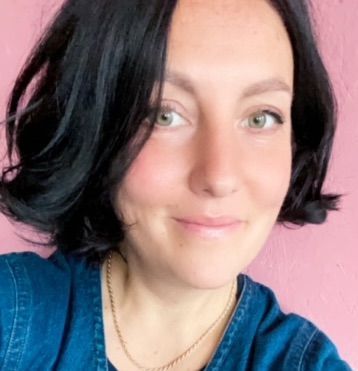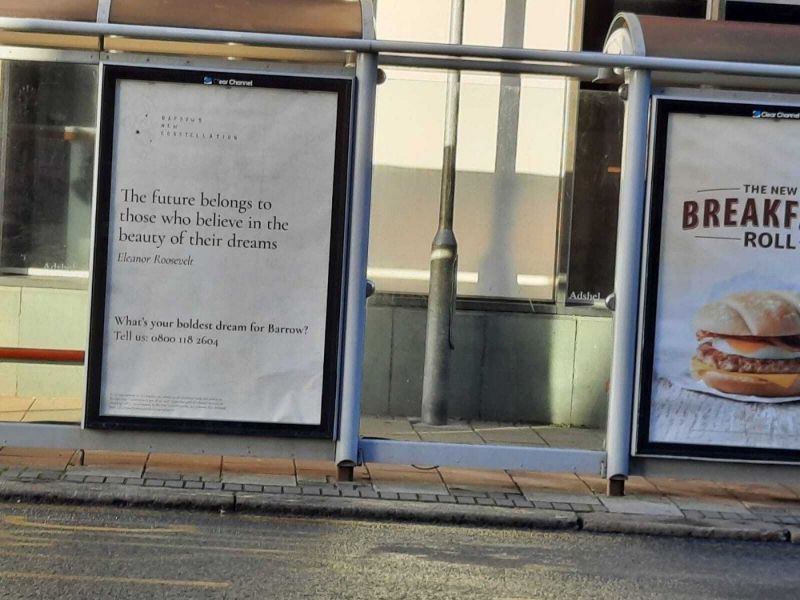
Photo credits: Cassie Robinson (medium)
Cassie Robinson holds strategy roles at Partners for a New Economy, Active Philanthropy and the Joseph Rowntree Foundation. She is currently Innovator in Residence at Impact on Urban Health, a Policy Fellow at IIPP, a Fellow at the Leverhulme Centre for the Future of Intelligence and runs the new Centre for Collective Imagination in Greenwich.
A lot of your work in the past few years has revolved around what you call “collective imagination”. What do you mean by that, and how did you come to this in your own itinerary?
The work around collective imagination came to the forefront of my mind around 2018. I had done a lot of work in UK civil society (in its broadest sense) for quite some time and was feeling a bit underwhelmed by the level of ambition, the sense of what was possible. The last straw for me was whilst running a workshop with some civil society leaders, and realising that nobody in that room could imagine civil society existing beyond the role of delivering services – as if everyone had forgotten all the other ways we can be together!
It also coincided and resonated with Geoff Mulgan and Rob Hopkins’ essays about the importance of imagination and the crisis of social imagination. I began thinking about the work that needed doing in that field. I didn’t feel that it was the same as speculative design or strategic foresight, although there are links. For me, there was something about collective imagination as a practice, about the need for people to think and feel differently, not just through the lens of futures, but differently about who we are, why we exist, that kind of thing.
Whilst working at the National Lottery Community Fund, I had the opportunity to develop an “Emerging Futures” program with the goal of building the capacity for collective imagination within place-based communities in the UK. It was initially launched in response to Covid-19, and invested in communities to bring forth their collective imaginations, to seed and centre new narratives and projects that could pattern entirely different futures.
What did you learn while running this program?
Firstly, people aren’t often asked to imagine something new or different. This area has really been under-invested in. So there’s often quite a lot of pre-work that needs doing for people to even get to that place – the conditions for collective imagination practice to take place really need cultivating. Time and resources are needed for this because everyone’s exhausted or overwhelmed, or trying to survive. Switching into a space for collective imagination is quite a lot to ask, we shouldn’t underestimate the work we need to do in advance.
I also learned that it is a practice. It’s something to develop over time, like a muscle, and that requires ongoing investment and resources. Therefore, what are the containers and the sites that are needed for that to become a regular practice?
We also learned that there is a rigor and a craft to doing collective imagination. It’s not as simple as giving communities some money, and letting them go off and imagine together. In the projects that worked well, the communities worked with other people who had those practices as a craft.
Finally, when you talk about imagination, people do think that you’re talking about individuals and their creativity. People generally find this idea of the collective harder to grasp. For me, this really is about what the collective can imagine that an individual never can.
Has there been work that tried to take stock of all that experience, to build it into some commonly accessible knowledge?
There is a growing group of practitioners in the UK, however I still don’t think the collective imagination practice is very developed. There’s so much scope to do more! Even with socially engaged artists, I still haven’t seen many of them start from that worldview that we are all interdependent, starting their practice by not individualizing us. Which leads me to another lesson: there is an infrastructure aspect of this.
What do you mean by infrastructure?
Infrastructure is stuff that we invest in long term, and is often more hidden. It’s the stuff that makes everything else work. For this work around collective imagination to really grow, be valued, and actually change things, we need something like this. In the same way that people are growing infrastructure around deliberative democracy: we have physical spaces like town halls that we know are vital. What does that look like for our collective imagination? At the Lottery, for example, we brought in an archivist to start archiving the work, because the ideas that were coming out of different communities could be strengthened by each other.
You have left the National Lottery Fund. What are you up to now with this topic of collective imagination?
I still feel strongly that collective imagination is a core part of any work around change. Talking from a UK context, we’re living in a world full of fatalism and overwhelm. This work around collective imagination is important because it can give hope and a sense of possibility and potential. It’s important because how it’s done and who gets to be in those spaces to collectively imagine can genuinely shift where we get to. We don’t need the same imagination that has got us where we are today. The act of collective imagination, being practiced by very different people and communities to those that have come before, is key to us getting anywhere different.
Developing collective imagination as a practice is really important, but we also need different ideas. For example: how can the practice of collective imagination hone our skill at recognizing the seeds of alternatives that are emerging?
The Joseph Rowntree Foundation (JRF) with whom I work with part-time has picked up the work I did at the Lottery. They have committed £1,000,000 to it over the next two years and we’re hoping other funders will join too.
The plan is to do a few different things. We are going to hire someone to help grow the community of practice, learning from each other, sharing experiences, and bringing others in to learn the practices. It needs to grow as a field. We don’t want to just have some really expensive consultants doing this work in ten years’ time. The person looking after the community of practice will also have a fund to distribute micro-grants through - that people in the community can ask to use, for example to do field-trips, learning exchanges, content creation and so forth.
We’re also going to do more work around narratives, maybe working with more mainstream brands and partners, carrying a more public message that “Other worlds are possible”.
We’re also developing a funding program - for both place-based collective imagination experiments, and also thematic ones.
Finally, we’re trying to build academic partnerships, in order to bring some rigor to how we collect evidence and evaluate these practices.
In your experience, what is the relationship, if any, between collective imagination and art?
They are definitely related. However… Maybe I’m a bit biased, because my background is in design, and design is about intent. Whereas when I think of the professionalised art world in the UK, especially in visual arts, I don’t feel like many of them are that concerned by the world – a lot of the work feels quite insular and highly personal, which is a shame as artists are well placed to create collective imagination experiences. Recently I went to something called the Dreamachine. Thirty of us sat there in a circle with headsets on. But how we made sense of that afterwards was not a collective experience. So there was nothing collective about it, other than just being there together.
Collective imagining needs to lead to some collective sense making. There needs to be a layer of interpretation based upon the collective imagining, that I think is more than, or different from art. But that’s just my view.
When we think about imagination and real-world change, there seems to be a tension between two directions: is it about telling the right stories, about injecting the right messages in compelling stories that will reach the masses and change them? Or is it about putting people in a position where they’re part of the writing of the story?
I think it’s probably both, but they are slightly different.
People that work in the art and craft of storytelling could come up with some new narratives, and think of clever ways to distribute them. Lots of people are talking about “deep narrative” change. To me, that’s just the same as advertising or marketing. Which is a valuable way of trying to create change, obviously depending on what the messages and the stories are.It may become more interesting when people use those approaches to prompt people in their everyday lives to open up their minds, and then follow up by bringing them together to take part in collective imagination.
This is what New Constellations did in Barrow. They posted billboards up around the town, put things in phone boxes and bus stops… They used some mainstream tactics around prompting people to think differently. But then they took people in the community through deep experiential processes around collective imagination. They also made sure to connect this work to real world change: through a partnership with the local council, which had a budget for urban renewal, the New Constellations community was able to inform how this budget is spent.

Some caption for testing (…)
You could look at that work on the surface and find it no different from a consultation, a co-design workshop or a citizen assembly. But I believe that the deeper, more embodied, and longer duration of that work actually connected people to their place and to each other in a more profound way. That is what a lot of them said, it actually gave them a renewed sense of pride in their place, and a new sense of what was possible, rather than a “yes or no” consultation exercise.
Does the process matter as much as the content?
Content is important, but the process is just as important. If people were honest, they would say the ideas that come out of a lot of co-design processes are often really crap, but people get a lot from the process. I don’t think it can only be about the process, though. I don’t want to settle for that with collective imagination. What comes from that process needs to be translated into something that can meaningfully change things.
How can or does that happen? Because in our experience, this is where the practitioners are most unsure.
This is knowledge that we absolutely need, but we too are learning. One thing that we know makes the difference is: who are the initial partners? With the Barrow project, one of the partners was the local council that was investing in this as a practice. The group of citizens that went through the New Constellations process still exists, and the council is taking forward the ideas that they came up with. That’s the only such example right now. Whether there is the money to take the stuff forward matters, and that has to do with the partnerships.
Is there a way of evaluating or measuring those things? Has there been work done on that?
There’s definitely anecdotal evidence. But that’s why we’re building the academic partnerships within the JRF, so we can work out what to measure. Do we measure wellbeing, social cohesion, sense of belonging? What are the things we could meaningfully measure from that kind of work? A lot of the great academics involved in the Creatures EU project are looking at this.
Project name:
Imagination Infrastructuring
Description:
A growing network of people and organisations seeding and investing long-term in imagination infrastructuring, and practicing collective imagination.
Website:
imaginationinfrastructuring.com
Interview conducted by Daniel Kaplan.